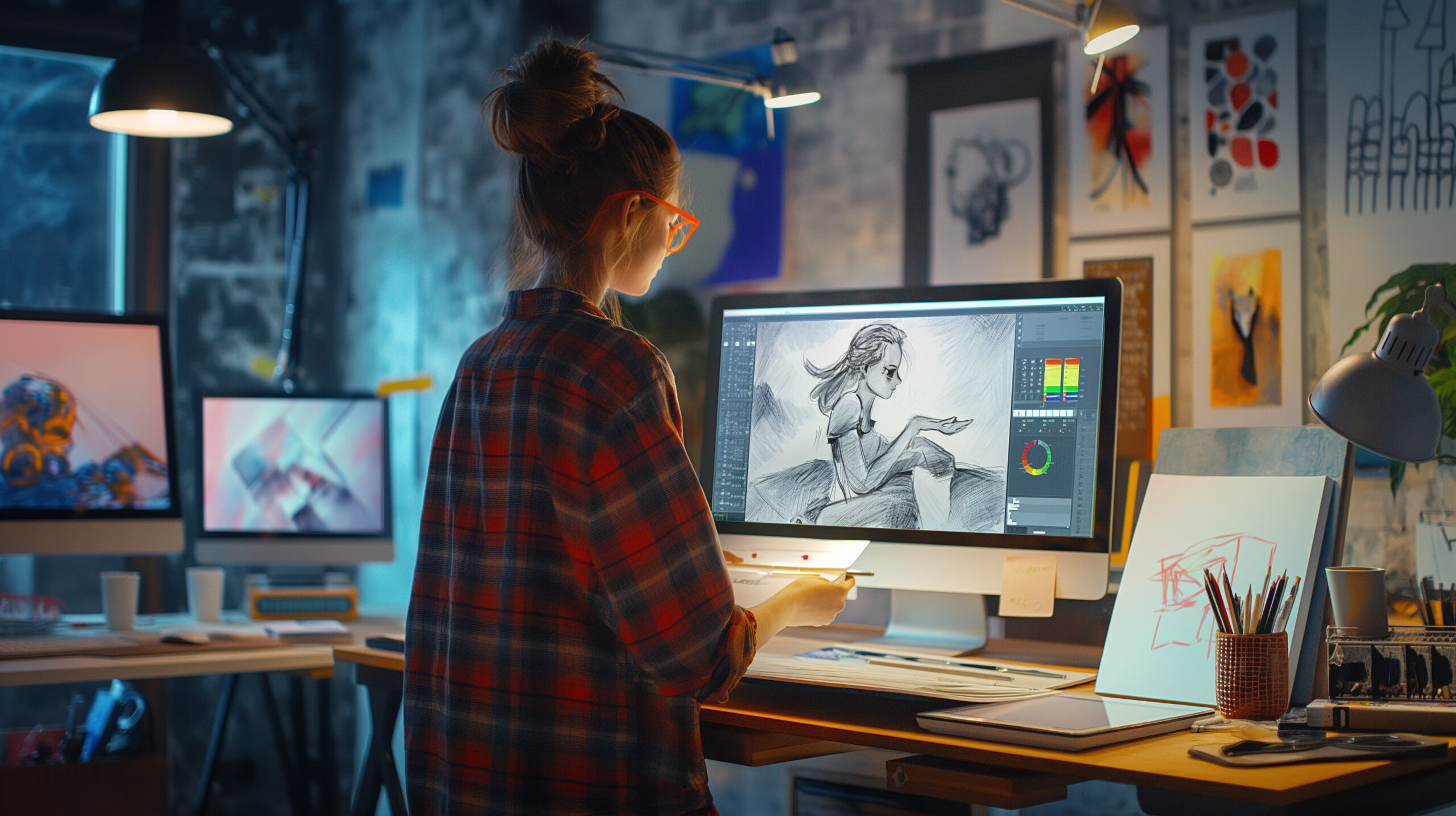By Les Roberts, Director of Miami Fine Art Gallery
In recent years, the art world has witnessed a profound transformation driven by digital innovation. From the way art is created to how it is experienced and collected, technology is reshaping the landscape of the art industry. At Miami Fine Art Gallery, we embrace these changes, recognizing the exciting possibilities they bring for artists, collectors, and art enthusiasts alike. In this blog, we will explore the intersection of technology and art and how digital innovation is redefining the art world.
The Rise of Digital Art
One of the most significant developments in the art world is the rise of digital art. Artists are increasingly using digital tools to create works that push the boundaries of traditional mediums. Software, tablets, and virtual reality have become essential tools for contemporary artists, allowing for new forms of expression that were previously unimaginable.
Digital art offers endless possibilities for creativity, from interactive installations to immersive virtual experiences. Artists like Beeple and Refik Anadol have gained international acclaim for their pioneering work in digital art, demonstrating its potential to captivate audiences and redefine artistic expression.
The Advent of NFTs and Blockchain
Perhaps the most talked-about technological innovation in the art world is the emergence of non-fungible tokens (NFTs) and blockchain technology. NFTs have revolutionized the way digital art is bought, sold, and owned. By providing a secure and transparent method of verifying ownership and provenance, blockchain technology has addressed many of the challenges associated with digital art.
NFTs have opened up new revenue streams for artists, enabling them to monetize their digital creations in ways that were not possible before. For collectors, NFTs offer a way to invest in digital art with confidence, knowing that their ownership is recorded on an immutable ledger. This has led to a surge in the popularity of digital art, with some pieces fetching millions of dollars at auction.
Virtual Galleries and Online Exhibitions
The global pandemic accelerated the shift towards virtual galleries and online exhibitions. As physical spaces were forced to close, many galleries, including Miami Fine Art Gallery, turned to digital platforms to showcase their collections. Virtual exhibitions have allowed us to reach a global audience, breaking down geographical barriers and making art more accessible than ever before.
Online platforms offer a unique way to engage with art, providing interactive features such as 360-degree views and augmented reality experiences. These digital innovations enhance the viewer’s experience, allowing them to explore artworks in detail from the comfort of their homes. As a result, virtual galleries have become an integral part of the art world, complementing traditional brick-and-mortar spaces.
Enhancing the Art Buying Experience
Technology has also transformed the art buying experience, making it more convenient and personalized. Online marketplaces and digital auctions have made it easier for collectors to discover and purchase art from anywhere in the world. At Miami Fine Art Gallery, we have embraced these platforms to offer our clients a seamless and secure buying experience.
Augmented reality (AR) is another technology that is enhancing the art buying process. With AR, potential buyers can visualize how an artwork will look in their space before making a purchase. This interactive feature provides a more engaging and informed buying experience, helping collectors make confident decisions.
Challenges and Opportunities
While technology presents numerous opportunities for the art world, it also brings challenges that need to be addressed. Issues such as digital copyright, data security, and the environmental impact of blockchain technology are areas of concern that require careful consideration.
At Miami Fine Art Gallery, we are committed to navigating these challenges responsibly. We work closely with artists and tech experts to ensure that our use of digital technologies aligns with ethical and sustainable practices. By staying informed and adaptable, we aim to harness the full potential of technology while safeguarding the integrity of the art world.
The Future of Art and Technology
The intersection of technology and art is an ever-evolving landscape, and the future holds exciting possibilities. Innovations such as artificial intelligence (AI), machine learning, and virtual reality (VR) are set to further transform the art world. AI-generated art, for instance, raises intriguing questions about creativity and authorship, challenging traditional notions of what constitutes art.
As technology continues to evolve, so too will the ways in which we create, experience, and collect art. At Miami Fine Art Gallery, we are excited to be part of this journey, embracing innovation while remaining true to our mission of celebrating artistic excellence. We believe that the fusion of technology and art will lead to a more dynamic, inclusive, and vibrant art world, where creativity knows no bounds.
Conclusion
The intersection of technology and art is reshaping the art world in profound ways. From the creation of digital art to the rise of NFTs and the advent of virtual galleries, technology is transforming how we engage with art. At Miami Fine Art Gallery, we are at the forefront of this transformation, embracing digital innovation to enhance the art experience for our artists and clients. As we look to the future, we are excited to explore the endless possibilities that technology offers, shaping a new era of artistic expression and cultural dialogue.
